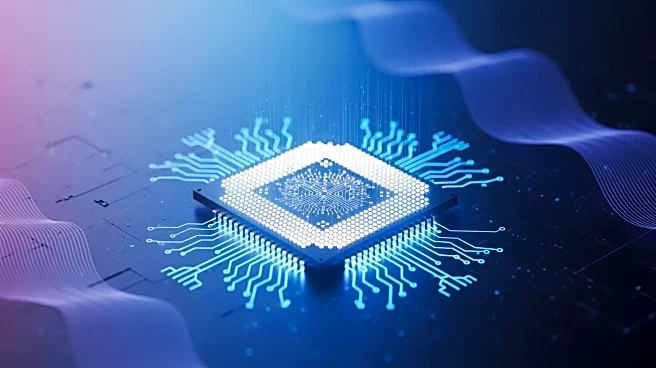What's Happening?
MIT physicists have reported new evidence of unconventional superconductivity in magic-angle twisted tri-layer graphene (MATTG). This material, created by stacking three atomically-thin sheets of graphene at a specific
angle, exhibits unique electronic properties. The team measured MATTG's superconducting gap, which differs from typical superconductors, indicating a different mechanism for superconductivity. This discovery, published in Science, suggests potential for room-temperature superconductors, which could revolutionize technology by enabling zero-energy-loss power cables and practical quantum computing systems. The research was supported by various U.S. and international organizations.
Why It's Important?
The discovery of unconventional superconductivity in MATTG is significant as it could lead to the development of room-temperature superconductors. Such materials would drastically improve energy efficiency in various applications, from power grids to quantum computing. This breakthrough could reduce the need for elaborate cooling systems, making superconductors more accessible and practical for widespread use. The research opens new avenues for understanding and designing superconductors, potentially transforming industries reliant on energy-efficient technologies.
What's Next?
The MIT team plans to use their experimental platform to further study MATTG and other two-dimensional materials. By mapping superconducting gaps in these materials, they aim to identify promising candidates for future technologies. This research could guide the design of new superconductors that operate at room temperature, a long-sought goal in the field. The findings may also influence the development of quantum materials, enhancing the capabilities of quantum computing and other advanced technologies.
Beyond the Headlines
The study of unconventional superconductors like MATTG could lead to ethical and environmental benefits by reducing energy consumption and waste. As superconductors become more efficient, they could lower the carbon footprint of technologies that rely on them. Additionally, understanding the mechanisms behind unconventional superconductivity may inspire new materials with unique properties, fostering innovation across scientific disciplines.











